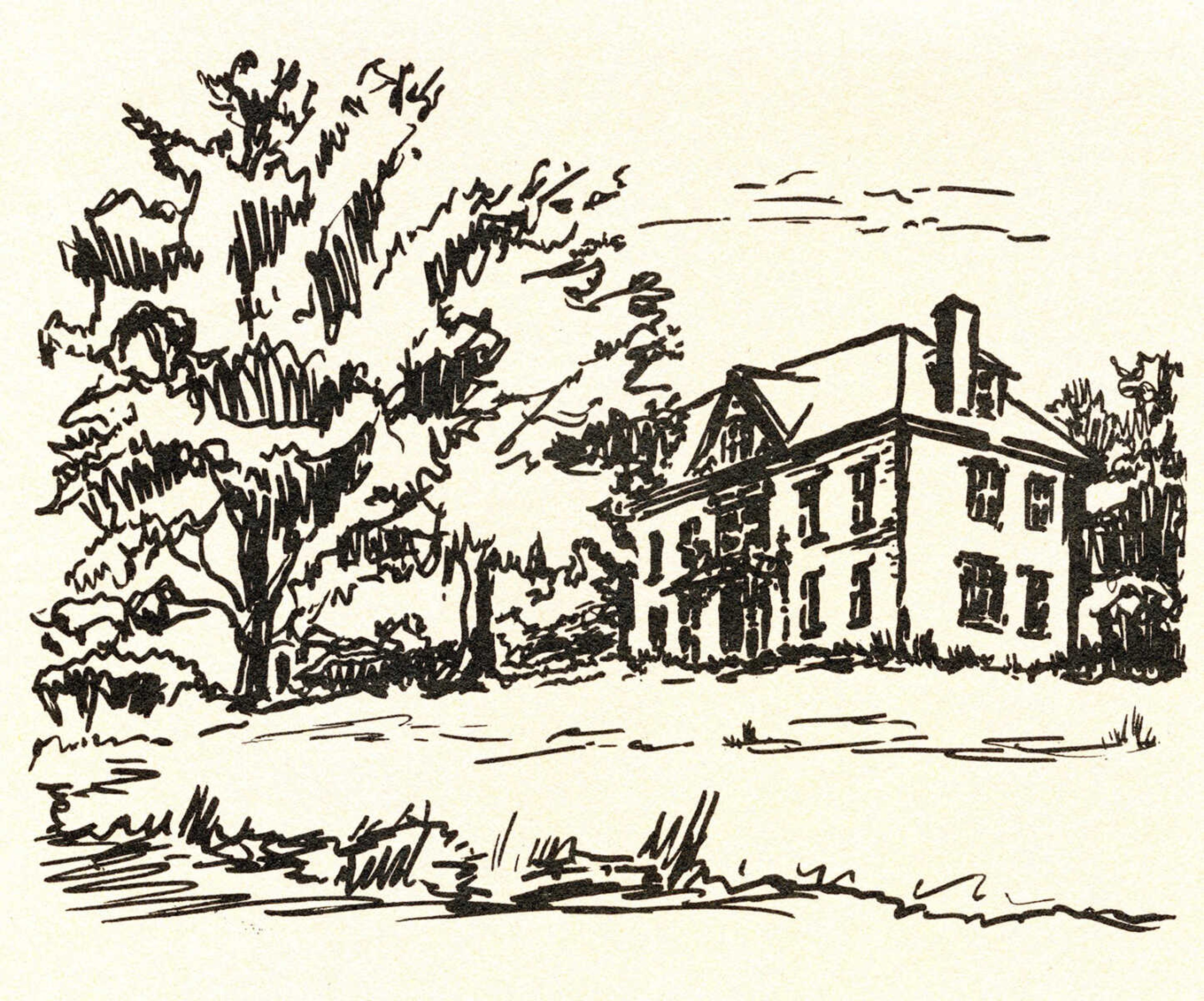Sixty acres of rambling pastoral countryside between the old Jackson Road and Independence Street was purchased by the Alfred Lacey family in 1858. They built a sizable two-story brick home on the highest point -- now the location of Central Middle School -- facing Broadway, which would be their home until 1863.
The home consisted of 10 rooms, including kitchen, parlors, hall and upstairs bedrooms. Other buildings on the property were a substantial brick barn, servants' home and spring house.
Alfred Lacey married Hannah O'Bannon in Madison County, Missouri, and moved to Cape Girardeau, where he became a prominent citizen. They were the parents of William, who died as an infant; Joseph; Julia; Alfred Jr. and Annie. Alfred Lacey served the city in many capacities, including mayor from 1850-52 and state representative from 1852-54 and 1860-62. In 1857, he was president of Missouri State Bank, which became Sturdivant Bank.
Tragedy struck the family as they set off on a spring holiday to New Orleans in May 1860. At the downtown levee, the family boarded the only side-wheel steamer built in Cape Girardeau. Named for its owner, the Alfred T. Lacey became well known in Mark Twain's writing, "Pilot on the Alfred Lacey-Day by Day", which chronicled Mark Twain's experiences piloting the steamer in his early days on the river.
A fire broke out on board as sparks caught the deck hay on fire about 10 p.m. as the steamer approached Booth Point, Tennessee, near Memphis. Sixteen passengers perished, including the owner's little 7-year-old daughter, Annie, who drowned. Books, papers and cargo, estimated at $180,000, were all lost. The steamer Magnolia, en route to New Orleans, rescued the remaining passengers, giving them free passage to New Orleans. News of the steamer's sinking made many newspapers, including The New York Times.
The Lacey home was in the midst of cannon fire during the Battle of Cape Girardeau in April 1863. Residents at the home were warned by Confederate Gen. Shelby to go to the stone cellar during the skirmish. The home was bombarded, setting the attic ablaze. A servant, Isaac, extinguished the fire, saving the home from destruction.
A story is told that Lacey was arrested by the 6th Missouri Union troops and sent by ship to a St. Louis prison. He later returned to Cape Girardeau, sold the farm and later moved his family to Memphis. Here he became a prominent and successful cotton factor. On the political scene, he was elected to the Tennessee State Senate in 1873-75 and appointed Senate president.
He and his wife, Hannah, died during the yellow fever epidemic that hit Memphis in 1878. They are buried at Elmwood Cemetery in Memphis.
The estate in Cape Girardeau was named Melrose and resold to several individuals following the Laceys. June 26, 1867, the mansion and land were advertised by S.R. Burford in the Marble City News, "A shooting match would be held to dispose of the property."
(To be continued with the Haas family, the last owners.)









